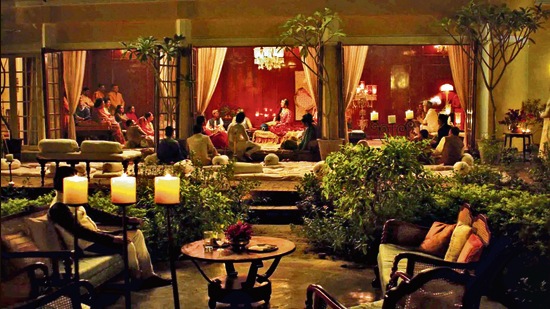Another side to summer: The Way We Were by Poonam Saxena
It’s hotter now, but the summers have always been scorching in north India. So how did people manage in the days before air-conditioning? With inventiveness, adaptation and great company.
Living through these interminable days of blazing heat, every month seemingly among the hottest on record, all we can do is hunker down and ask ourselves: How are we going to bear it?

Which set me thinking: How did we live through the Indian summer, particularly the fierce north Indian summer, in a pre-air-conditioning world? I spoke to my aunts, who were schoolgirls in the ’50s. To my bafflement, I discovered that they didn’t remember the heat at all. What they remembered was an unhurried, pleasant rhythm to the long days and nights, a rhythm created to keep the house and its inhabitants as cool as possible.
So here it is: a day in the life of a 1950s north Indian summer in a Kanpur bungalow.
Let’s start with the night. Everyone slept under the open sky, either on the lawn or in the courtyard, their cots draped with thin mosquito nets. Pedestal fans and table fans, placed at either end of a row of beds, created a gentle breeze. The more elegant members of the family placed fragrant moti gajras, slightly dampened, next to their pillows.
The family woke and bathed early. At about 11 am, all the chiks were lowered and the giant desert coolers would be switched on, which radiated cool air through the deliciously darkened rooms. Lunch was served early, around one. After that, the older members of the family would retire for a nap. The children were not allowed out in the scorching midday heat (though the more adventurous would steal out to climb the mango trees), so they would usually crowd into one bedroom and play indoor games, ludo, carrom, cards (teen-do-paanch, rummy, bluff). Or they would read books and magazines; the Hindi magazine Chandamama, with its colourful illustrations and thrilling stories of Vikram and Betal, assorted kings and monsters, was most popular.
In the evenings, as the sun’s fury abated, cooling drinks were passed around: aam ka panna, bel ka sherbet, masala chhas, nimbu paani. There would be a homemade nashta of daal moth, mathri, namak paara. At twilight, water would be sprinkled on the ground in the aangan and other open areas, in preparation for the night when the cots would be lined up under the starry skies.
Meal times followed a pattern too. There was always a mutton curry, but no fish (May to August, peak summer and monsoon, used to be a hard time to find fresh fish, or keep fish fresh). Seasonal summer vegetables such as lauki, turai and tinda were staples, but since these were not considered the most appetising, the kitchen would turn out dishes made of besan, such as gatte and taka paisa, or daal kebabs. Pudina and dhania chutneys were a must with every meal. Summer fruits like mango and melon were eaten every day.
There was no fridge; the first refrigerator (GEC) arrived only in 1957. Food was stored in large, latticed wooden boxes with a fine mesh. There were ice boxes too, for which large ice slabs would be ordered from the bazaar. These were never used to cool water, which was always drunk out of earthen surahis and ghadas.
It helped that the houses were built with thick walls and high ceilings. There was excellent cross-ventilation. The first AC arrived only in the late ’50s, but as my aunts all said, “Did we really need it? We’re not sure.”
Catch your daily dose of Fashion, Health, Festivals, Travel, Relationship, Recipe and all the other Latest Lifestyle News on Hindustan Times Website and APPs.
Continue reading with HT Premium Subscription





